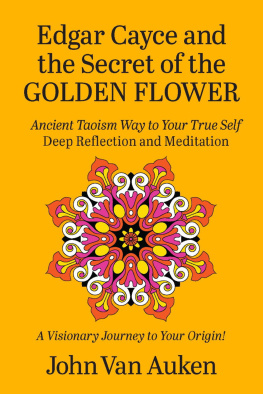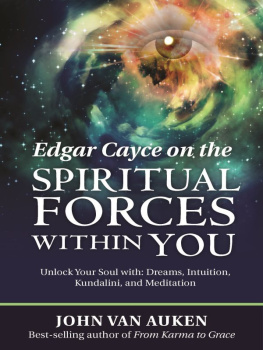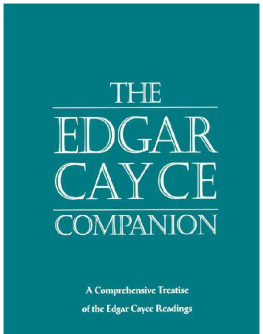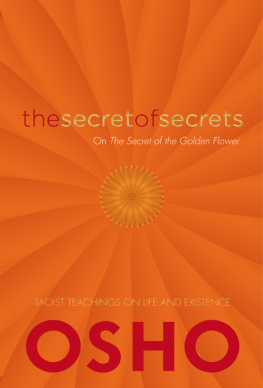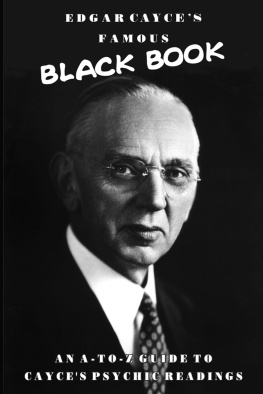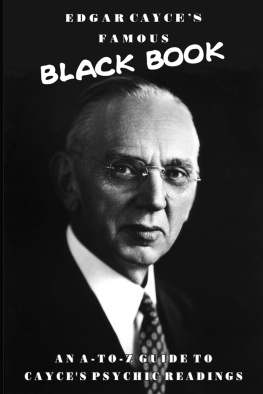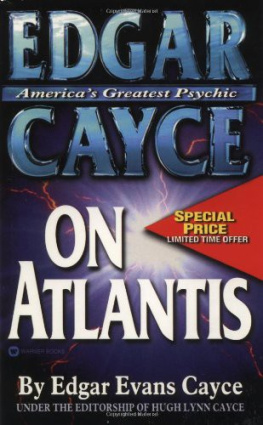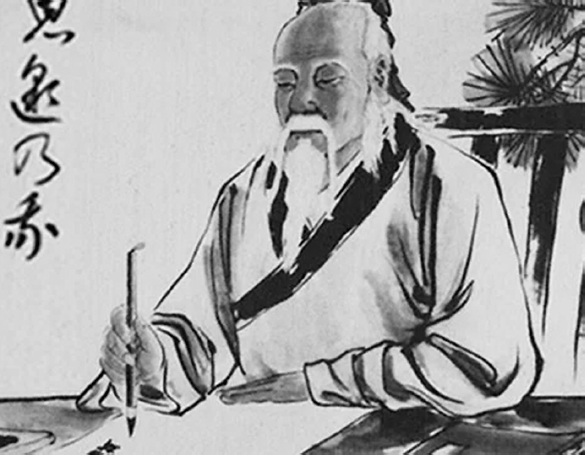
Edgar Cayce and the Secret of the
Golden Flower

Edgar Cayce and the Secret of the
Golden Flower
The Ancient Chinese Way to Enlightenment
Taoism
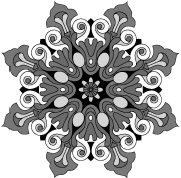
John Van Auken
Director at the Edgar Cayce Foundation
author of
Edgar Cayce and the Kabbalah
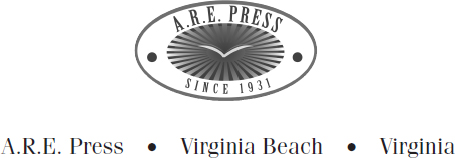
Copyright 2019
by John Van Auken
1st Printing, January 2020
Printed in the U.S.A.
All rights reserved. No part of this book may be reproduced or transmitted in any form or by any means, electronic or mechanical, including photocopying, recording, or by any information storage and retrieval system, without permission in writing from the publisher.
A.R.E. Press
215 67th Street
Virginia Beach, VA 23451-2061
ISBN-13: 978-0-87604-981-5
Edgar Cayce Readings 1971, 1993-2007
by the Edgar Cayce Foundation.
All rights reserved.
Cover design by Christine Fulcher
CONTENTS
Book One
Teachings of the Golden Flower of the Great One
[Tai-i Chin-hua tsung-chih)
Book Two
The Book of Consciousness and Life
[Hui Ming Ching)
Illustrations
Teachings of the Old Master
A Brief History and the Key Concepts of Taoism
The word Tao may be translated into English as Way, and is pronounced dow (rhymes with how), sometimes spelled Dao. It is considered to be a Way to physical, mental, and spiritual health.
Taoism has gone through many changes over the past 2,600+ years. Some writers and teachers consider it to be a religion, some believe it is a philosophy, while others teach that it is a way of life in harmony with the natural order and flow of life. It did become the official religion of the Tang Dynasty (618-907 CE or AD), which is considered to be the highest cultural period in ancient China, a truly golden age of art, social order, music, and philosophy. Interestingly, given modern feelings about male-dominated leadership, the Tang Dynasty included a female emperor whose name was Wu Zetian.
In the early years of this Dynasty, Confucian scholars ruled the bureaucracy, and examinations were used to test candidates literary skills and knowledge. A legal code was instituted. The Silk Road trade was flourishing, bringing many foreign emissaries to Emperor Taizong and his wonderful country. During this time Buddhism was promoted. The spread of Buddhism was aided with the invention of woodblock printing techniques. Buddhist texts and charms were printed and disseminated. Amazingly, Nestorian Christianity was also promoted! In 635 CE, a Nestorian named Alopun traveled to China, and Emperor Taizong approved of the preaching of his religion all over the empire, even ordering the construction of a church in Xian (then ancient Changan). Many people became Nestorian Christians. Nestorian Christianity is akin to the Eastern Orthodox Church (from Egypts Copts up through Greece, Eastern Europe, and into Russia), and these devotees considered Jesus to be a human and Christ to be of God, thus God worked through the manthere being two natures, one human and one divine. The preachers of the Eastern Church moved through Asia, while the Western Church moved through Western Europe, Britain, and the isles, and on into the Americas.
Today, Taoist precepts and practices have become popular throughout the world and are found in the practice of Tai Chi Chuan (pronounced tie-chee chew-on, often called simply, Tai Chi, tie-chee), Qigong (pronounced chee-gong), and various martial arts, such as Kung Fu and the cultural arts, such as Wushu.
Taoism can be divided into two branches: one seeks a way to physical and social health and well-being, and the other branch seeks a way to eternal reality and immortality. They work together, because a healthy physical self makes an excellent temple for an enlightened mind and immortal soul. One sect of Taoism was devoted to conforming to the law of cause and effect, or karma, while transcending the bonds of illusion and confusion. Much of this transcendence is realized through deep reflection and meditation, breathing exercises, and reversing the outflow of energy from the body and the mind. This is what The Secret of the Golden Flower is all about.
Master Lao Tzu
The origins of Taoism are generally attributed to a philosopher named Lao Tzu, also known as Laozi, and with spelling variations of Lao Tse, Lao Zi, and L Tsu. He is considered to be the author of the classic book, Tao Te Ching (this title may be translated into English as, The Way and Its Virtue or The Way and the Power). Most researchers believe the Tao Te Ching was written around 600 BCE (BC). In Tao Te Ching we find the fundamental concepts of Taoism, which we will also find in The Secret of the Golden Flower, a book of more modern times.
Who is the true founder of Taoism? The answer is clouded in ancient history, and adding to the challenge is that many teachers carried the same name. Here is what we know from two sources: The first, and the oldest source, is the ancient Chinese historian Ssu-ma Chien (14590 BCE) (pronounced see-ma chee-en, where Ssu-ma is the family name, Chien is his personal name), and his extraordinary work titled Records of the Grand Historian (also known by its Chinese name, Shiji, approximately pronounced shoo-tee). I will use his romanized name, Sima Qian (the Q is still pronounced chee). The second and more modern source is Youlan Fengs Volume 1 of A History of Chinese Philosophy, translated by Derk Bodde, and first published in the 1930s. Fengs book covers the ages from the most ancient origins of oral teaching traditions to about 100 BCE.
According to these two sources, there may have been three teachers who contributed to the beginning of Taoism, each carrying the title of Lao Tzu! You see, lao tzu may be translated into English as old master, old teacher, and old philosopher. Lao means old, and tzu is a term of respect for great teachers/thinkers. Thus, it is not so much a personal name as a descriptive title: . This title could apply to any one of the great teachers in Chinese antiquity. That said, some specific person or persons developed and taught the Tao Te Ching and established the founding principles that have guided the growth of Taoism.
Sima Qians search through ancient Chinese history actually found three old masters, any of whom could have been the founder of Taoism. According to Sima Qian, the first Lao Tzu was a man named Li Erh (pronounced
Next page
